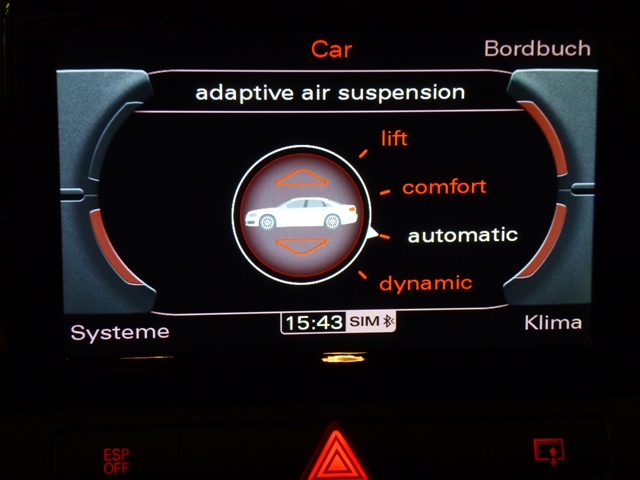Summary
– How air suspension is used
– Description and operation of the air suspension
– Mounting of the air suspension on the vehicle
– Advantages of air suspension
Air suspension, not to be confused with hydropneumatic suspension (Citroën) uses the principle of gas elasticity: air is compressed to adjust the suspension hardness.
What is it used for? How much does it cost? Can my vehicle be equipped with it? We tell you everything in the following article.
How air suspension is used

The majority of equipped vehicles (often exclusively in the rear) are commercial vehicles, emergency vehicles (ambulances), 4X4s and motor homes. There are, however, a few passenger vehicles equipped with this system.
The main advantage of air suspension is its ability to change the attitude of the car:
– Commercial vehicles: whatever the loading weight, the vehicle’s attitude is the same. When unloading, the vehicle can be lowered as much as possible to make unloading easier.
– Ambulances: the advantage of this suspension is that it is smooth and comfortable, which is essential for transporting people. Here too, the suspension can be lowered for loading the stretcher.
– Passenger cars: on MPVs with 8 seats, the air suspension, in addition to its comfort, provides a constant ride height.
– 4X4: obstacle clearance.
– Motorhomes: compensation for the vehicle’s heavy weight, levelling for parking, obstacle clearance (large overhang).
Description and operation of the air suspension
- Constitution
The suspension consists of the following elements:
– The compressor, which provides the air pressure. It is electric and is often controlled by a computer.
– The air springs: these are the ones that receive the air pressure. Their constitution is the same as the air jacks. They advantageously replace springs or blades.
– Pneumatic pipes: they ensure the transport of compressed air.
– Control and exhaust solenoid valves: they modulate the air pressure for each air spring.
– Height sensors: located under the vehicle, they send an electrical signal to the computer that is proportional to the height of the chassis.
- Operation
2 operating modes are often possible:
– Automatic mode: the computer manages the constant height of the suspensions. It controls the air compressor to raise the ride height and the solenoid valves to lower it, with information on the actual height provided by the height sensors.
– Manual mode: a manual control module is installed at the driver’s station, allowing him to adjust the height at will, and for certain applications to control the individual height on each side (motorhome).
Mounting the air suspension on a vehicle

The adapter kit is easily available in shops (or even at the accessory shops of commercial vehicles and motor homes) and is relatively easy to install for any enlightened handyman (it is better to have it fitted by a professional for the others).
Here are a few recommendations:
– Scrupulously follow the instructions contained in the kit.
– Carry out the assembly with care, especially for:
◦ the electrical and pneumatic connections;
◦ the routing of cables and pipes under the vehicle: it must be carried out with great care (fixings – take into account the deflections and proximity of the exhaust line for example);
◦ Tightening must be carried out at the prescribed torque;
◦ the safety instructions for working under the vehicle must be observed (car jacks, etc.).
Budget: depending on the options you take, the kits are negotiated between $500 and $1000.
Advantages of air suspension
The cost aside, you will gain after installation in safety, handling, comfort, reduced suspension travel noise, constant ride attitude whatever the load (no more problems with headlights too high, no more large suspension travel), possibility to manually adjust the height (to unload, to pass an obstacle…).
Finally, all these advantages will result in more efficiency at the wheel, less fatigue and lower fuel consumption.

